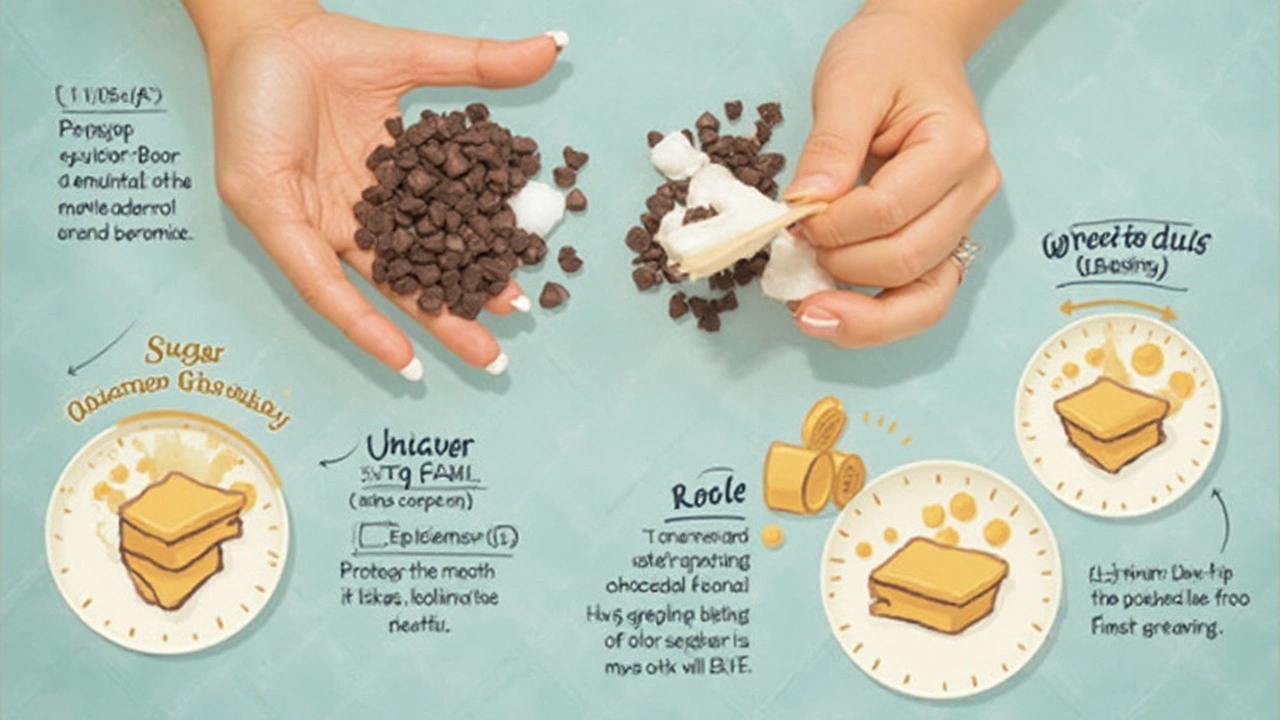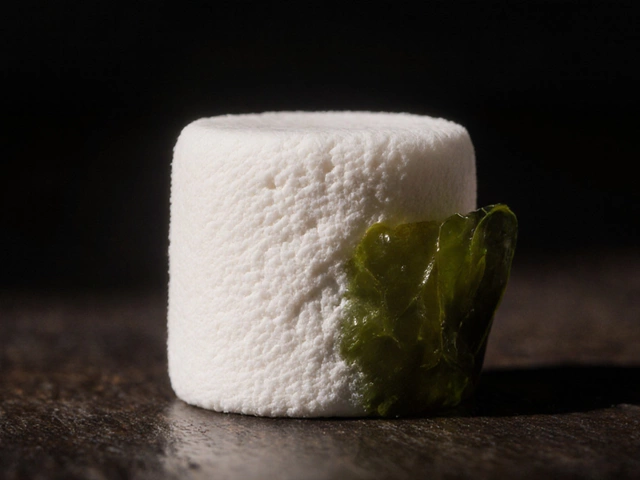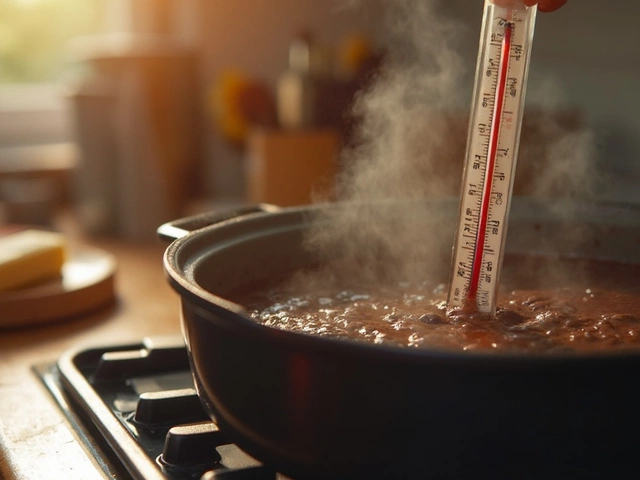
It’s seriously annoying when you’re craving homemade fudge, only to wake up the next morning to a pan of goo that refuses to firm up. Most people blame themselves or the recipe, but there are a few super common culprits. 3 ingredient fudge is supposed to be quick and simple, so what’s going wrong?
The truth is, setting fudge is kind of like a science experiment. If just one thing goes off, you get sticky spoonfuls instead of neat squares. You’re not alone—almost everyone who’s made this shortcut treat has had at least one batch that ended up too soft.
Let’s cut through the guesswork and talk about what’s really happening with your fudge. The main things to think about are the type and amount of chocolate, the condensed milk, and (if you’re using it) any add-ins like butter or peanut butter. If you swap just one brand or measure a little too casually, things can get weird fast. But don’t worry—these problems are easy to spot and fix once you know what to look for.
- Common Reasons Your Fudge Won’t Set
- Mistakes with the Three Ingredients
- Quick Fixes for Soft Fudge
- Getting Consistent Results Every Time
Common Reasons Your Fudge Won’t Set
If your 3 ingredient fudge is staying soft and sticky, you’re not the only one. There are a few things that usually mess up the setting process—most aren’t obvious until you end up Googling what went wrong. Let’s look at the main reasons:
- Wrong Ratio of Ingredients: Even a little too much condensed milk or not enough chocolate might leave you with a fudge that stays soggy. Most quick fudge recipes want a precise balance between the two. If you eyeball the amounts, it’s easy to tip things out of whack.
- Type of Chocolate Matters: Cheap chocolate chips or low-cocoa chocolate can ruin your fudge. Good quality dark, semi-sweet, or milk chocolate bars (not chips) set better because they contain more cocoa butter. Chips usually have stabilizers so they hold their shape when baked—great for cookies, but not for fudge.
- Not Melting Everything Properly: If the chocolate and condensed milk aren’t fully combined, lumps or streaks stay soft. Make sure it’s a smooth, glossy mix before you pour.
- Too Much Liquid Add-Ins: Adding vanilla, extracts, or booze is tempting, but if you go overboard, your fudge might never set. Same goes for using regular milk instead of condensed milk by mistake. That’s a classic reason for runny fudge.
- Humidity and Room Conditions: Believe it or not, making fudge on a hot, humid day makes it much harder for it to set. Summer kitchens or rainy days can sabotage your batch. Try to let it cool someplace dry and cool, or stick the pan in the fridge.
Check out this quick table so you can spot the issue:
| Common Issue | Impact on Fudge |
|---|---|
| Too much condensed milk | Stays soft, won't firm up |
| Low-quality or baking chips | Doesn’t set clean, greasy texture |
| Undermixed batter | Lumpy, uneven setting |
| Extra liquids (extracts, milk) | Fudge remains gooey |
| High humidity | Slow/poor setting, sticky surface |
Bottom line: If your fudge not setting is driving you crazy, there’s usually a super specific reason. Most of the time, it’s just one small thing that makes the whole batch misbehave.
Mistakes with the Three Ingredients
When your fudge not setting becomes a Google search, it usually comes down to a mess-up with one of the three core ingredients: chocolate, sweetened condensed milk, or butter/peanut butter. Each one matters, and little changes make a big difference.
First up, chocolate. That cheap chocolate you grabbed in a rush might stop your fudge from firming up. Chocolate chips, especially the "baking" kind, have stabilizers that don’t always melt down as smoothly. Real chocolate bars or higher-end chips melt better, helping the fudge firm as it cools. Milk chocolate is softer than semisweet or dark, so if your fudge is too soft, check which one you grabbed. Even swapping white chocolate for dark chocolate throws off the texture.
Next, sweetened condensed milk. Don’t swap in evaporated milk or homemade versions—it doesn’t work. The thick, syrupy sweetness is what gives fudge its body. If you cut back on it (trying to make the treat healthier) or buy a watery store-brand can, the fudge will never set right. Condensed milk has about 40-45% sugar. Evaporated milk? Zero added sugar—that’s a fail for fudge.
The third piece is whatever fat you use: usually butter or peanut butter. This is where lots of "healthier" recipes tank. Margarine or low-fat spreads won’t give the same creamy set. Natural peanut butter causes problems too—it’s often too oily and doesn’t solidify the same way processed peanut butter does.
| Ingredient | Common Mistake | Effect on Fudge |
|---|---|---|
| Chocolate | Used baking chips or swapped chocolate type | Runny or greasy fudge |
| Condensed Milk | Used evaporated milk or watered-down brand | Won't set, stays gooey |
| Butter/Peanut Butter | Used margarine or natural peanut butter | Oily, never firms up |
Chilling times matter, too. Stick the whole tray in the fridge for at least four hours—overnight is better. Impatience won’t do you any favors. And if you live somewhere hot or humid, your fudge might need even more time to chill. Once you spot which ingredient went off, you’ll know what to tweak for next time.

Quick Fixes for Soft Fudge
No one likes realizing their fudge looks more like frosting than those rich, perfect squares you dreamt up. The good news? You can often save that gooey batch without tossing it out. Here’s what you can actually do right now to turn things around.
Before you panic, double-check that you let the fudge cool completely. That takes at least 3–4 hours at room temp, or closer to an hour if you pop it in the fridge. Still mushy? Here’s what usually works:
- Re-Melt and Add More Chocolate: If your fudge isn’t getting firm, chances are there’s not enough chocolate to harden it once cooled. Scoop everything back into a heatproof bowl and gently melt it down again (microwave in short bursts or use a double boiler). Add a few ounces more of chocolate chips—about 1/4 to 1/2 cup. Melt, stir, and pour it back into your pan to set.
- Try Chilling Longer: Sometimes fudge just needs extra fridge time, especially if it’s humid or you used full-fat sweetened condensed milk. Give it another 6-12 hours in the fridge for a firmer texture.
- Add Mix-Ins Smartly: Nuts and dry mix-ins help fudge firm up by giving it more structure. Stir in a handful of chopped pecans, walnuts, or cookie crumbs right before pouring it into the pan. This isn’t magic, but it can perk up a wobbly batch.
- Skip the Freezer (At First): Freezing fudge to force it to set usually just makes it icy or weird. Always chill in the fridge first so the texture stays creamy.
If you’re still struggling, here’s a quick-and-dirty table with fix-it ideas based on what’s in your kitchen and how much time you have:
| Situation | Quick Fix | Extra Tools Needed |
|---|---|---|
| Warm, soft fudge after hours of chilling | Remelt and add more chocolate | Microwave or double boiler, extra chocolate chips |
| Still soft but starting to set | Chill for 6-12 more hours | Refrigerator |
| Fudge is sticky, not sliceable | Mix in chopped nuts or cookie crumbs | Nuts or cookies, spatula |
| Want to save a failed batch fast | Roll into truffles and coat in cocoa or powdered sugar | Cocoa or powdered sugar, spoon |
Sometimes, even when you follow the fudge not setting tips to a T, the fudge just won’t cooperate. Don’t sweat it. Fudge ‘fails’ make awesome toppings for ice cream, brownies, or pancakes. You can even roll the soft stuff into balls and coat in cocoa powder for DIY truffles that taste fancy but took zero effort.
Getting Consistent Results Every Time
If you’re tired of playing fudge roulette, you’ll love how a few simple tweaks can turn your kitchen into a fudge factory—minus the drama. Getting repeatable, sliceable results isn’t magic. It’s about sticking to the right steps and ingredients every single time.
- Measure everything properly. Skimping on chocolate or adding too much sweetened condensed milk throws off the balance. Use dry measuring cups for the chocolate and liquid for the condensed milk. A digital kitchen scale totally removes the guesswork if you have one.
- Stick with high-quality chocolate chips or bars, ideally labeled as baking chocolate. Lower-quality chocolate often has fillers, which stop the fudge from setting. Milk chocolate sets much softer than semisweet or dark, so if you want firm fudge, skip the milky stuff.
- Heat the mixture gently and patiently. Even a shortcut fudge needs the chocolate fully melted and combined. Go slow over low heat or microwave in short bursts, stirring every 30 seconds so nothing scorches.
- Line your pan with parchment and let the fudge cool at room temp first, then chill it in the fridge for 2–3 hours minimum. Rushing this step is a top reason for soft fudge. If your kitchen is super humid, the fridge is your best friend.
To show you just how much these little things matter, here’s a quick look at what happens when you tweak the method or ingredients:
| Step/Ingredient | Result When Done Right | Result When Skipped/Wrong |
|---|---|---|
| Right chocolate ratio | Firm, sliceable fudge | Sticky or runny fudge |
| Measured condensed milk | Rich, sweet, sets well | Too soft or too sweet |
| Fully melted mixture | Even texture, glossy finish | Lumpy or uneven fudge |
| Cool and chill time | Perfect blocks cut easily | Sticky mess, won’t hold shape |
Once you get the hang of it, you’ll barely need a recipe. You can even experiment with add-ins like nuts or dried fruit without messing up the basic formula. The key? Always nail the fudge not setting basics first, and you’ll wow everyone (including yourself) every time you make a batch.





